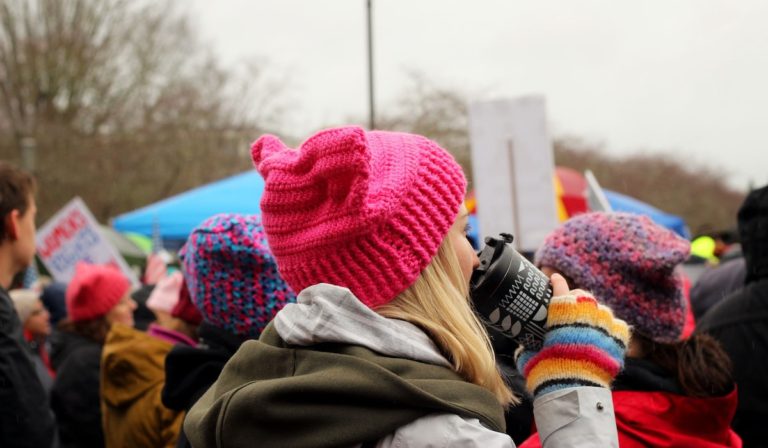Have you ever listened to someone talk about a problem you’ve heard them complain about a million times before?
Well, I was recently speaking with a friend about her relationship struggles. And let’s just say this wasn’t the first time she came to me with her concerns.

She was beyond exasperated and extremely upset with an accumulating series of fights in which she and her boyfriend were unable to communicate calmly and clearly.
She did not feel heard or prioritized by him.
As she expressed her frustrations to me she said, “I want to be able to talk with him, but he just doesn’t get me.”
Feeling a deep empathy for her desire to be acknowledged and at peace with her boyfriend, I posed the question:
If you believe he doesn’t get you and you hold that belief going into every conversation you have with him, does that leave any space for the possibility of him to actually understand you?
She thought for a moment then responded quietly, “No.”
Our thoughts create our perceived reality.
How could my friend really feel acknowledged if she had already made up her mind that her boyfriend never understood her?
I asked her if there were times in the past where she did believe they were on the same page. She said yes and I prompted her to further explain what tangible things he did — and can do — to show her he cares and understands her perspective. I suggested she express how she’s feeling and explicitly ask for what she’s looking for to feel more understood.
This exercise shifted my friend’s focus away from the negative thicket of the prolonged current argument to a mindset where she was visualizing healthy interactions with her boyfriend to know what to ask for and look for moving forward.
I have been practicing this mindset shifting while hunkered down at my parents following the termination of my global travels brought on by the Coronavirus pandemic. Without a job, a place of my own, or a fleshed out plan for what I’m doing next, this is the highest level of uncertainty and least control I’ve ever experienced.

I’ve had an entrepreneurial desire for awhile now and fortunately have financial security, so I’m taking the time to imagine new possibilities for myself.
I clamber out of depressive states of stuckness through self-compassion, clarifying hopes, and growing faith that things will work out.
I was reassured of my approach while listening to Christiana Figueres’ interview on the podcast Your Undivided Attention. As the Executive Secretary of the UN Framework Convention on Climate Change, she can most certainly speak to tough times and overwhelming obstacles.
After the 2009 Copenhagen Climate Summit collapse, she was interviewed by a reporter who asked her if she believed the climate crisis would be solved in her lifetime. Her answer was no.

The profound impact of this pessimistic stance really hit her. It weighed down her passionate drive to solve the issues she cared about so deeply and weakened her ability to engage others to take timely actions.
She decided to truly imagine and believe in a world where climate change is no longer a problem. Her deep-rooted values and passion-driven work depended on this possibility being true.
Through intense internal emotional Aikido, she got to a place where she no longer debated whether it was going to happen, but focused instead on how it was going to be achieved.
With a reinvigorated faith and determination, she went on to rebuild the global climate change negotiating process, which ultimately led to the 2015 Paris Agreement that has been widely recognized as a monumental historical achievement.
Her approach required her to let go of personal limiting thoughts and channel external critiques into powerful input that made her team’s approach stronger.
The podcast hosts Tristan Harris and Aza Raskin continuously tied Chrisiana’s insights to the Tech Industry and explored how digital devices and media influence our beliefs and behaviors.
They pondered the possibility:
Technology could actually help us view the climate crisis in an optimistic, action-oriented way, promoting learned helpfulness instead of learned hopelessness.
Some specific ideas they posed included:
- Google Maps presenting projections of flood lines ten years from now in two different scenarios — one illustrating the likelihood of hometowns and vacation hubs underwater from inadequate actions and another with reduced flood levels influenced by recommended steps displayed.
- Leveraging LinkedIn to showcase a company’s climate score and provide direct contact to the person or department in charge to advocate for improvements
As I listened to their eager brainstorming, I reflected on existing media that already showcases future projections and subsequently influences our behavior… the weather.
With the help of temperature displays, pressure maps, and precipitation percentages, I can imagine how it’s going to feel outside and that embodied visualization determines how I dress and the plans I make.

If a weather app informs our current actions through forecasted projections, imagine what else technology can do to transform human behavior towards saving our planet?
How can our devices and media inspire stubborn optimism?
When I look at the weather and see nothing by rain and clouds for the upcoming week it makes me feel lousy, but as soon as a sun icon appears 3 days out I’m uplifted with hope!
This notion of hope for what a future can look like has also appeared in Hollywood. At the onset of this year, Awkwafina became the first Asian-American woman to win a Golden Globe Award for best actress.

In response to the #OscarsSoWhite movement started by April Reign in 2015, the Academy announced in 2016 an initiative to double the share of women and people of color among its members by 2020.
According to the 2020 UCLA Hollywood diversity report, as of last year, women make up 50% of the membership and 29% are people of color.
There is still a long way to go with shifting longstanding power structures. And the obstacles that particular individuals have to face are still unfairly monstrous. But the conversation has begun about representation in our media. It’s been recognized that there is significance in seeing different types of people succeed to promote diverse aspirations.
You can’t be what you can’t see.
If it doesn’t exist in current reality, it’s time to get creative to bring new possibilities to light. This requires visualizing with our minds and new media.

We can’t solve a looming problem like the climate crisis if we do not have faith in our desired solution.
Seeing is believing.
There are tangible ways tech can help us visualize an ideal future where we are no longer plagued by ever-surmounting environmental issues and every human has access to energy, food, water, and adequate health services.
There are steps you can take to imagine a reality where you’re completely at peace, fulfilled, invigorated and in love with your life.
Start by daring to dream.
Open your mind to new possibilities, even if momentarily.
Begin to explore how you can cultivate faith in achieving what you desire.
Originally published on Medium: https://medium.com/@kelseylgreene/why-radical-visualization-is-necessary-to-overcome-all-problems-c1ff1bd2437



